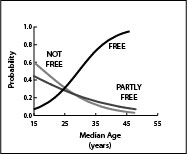 In a world rapidly churning out unpredictable political shocks, intelligence analysts occasionally need to clear their heads of the daily barrage of newsworthy events and instead work with simple theories that discern the direction and speed of trends and help predict their outcomes. Political demography, the study of population age structures and their relationships to political trends and events, has helped some analysts predict geopolitical changes in a world that, from time to time, appears utterly chaotic.
In a world rapidly churning out unpredictable political shocks, intelligence analysts occasionally need to clear their heads of the daily barrage of newsworthy events and instead work with simple theories that discern the direction and speed of trends and help predict their outcomes. Political demography, the study of population age structures and their relationships to political trends and events, has helped some analysts predict geopolitical changes in a world that, from time to time, appears utterly chaotic.
Much of my recent work has focused on democratic transitions and age structure – that is, what the median age of a country can tell us about its propensity to become a “liberal democracy” or remain either undemocratic (without free, fair, and politically meaningful elections) or illiberal (short on civil liberties and rule of law). There is, in fact, a strong correlation in recent history between increasing median age and increasing liberal democracy, and vice versa (the younger a population is, the less likely it is to be a liberal democracy). These and other age-structural relationships have become so evident over the past three decades of research, that political demographers can now identify “rules” that link demographic characteristics to expected political outcomes.
For the rest of this essay, go to The 8 Rules (also posted on the New Security Beat) … and see the 7 regional tables at this site. Download an Excel Workbook of tables here.
